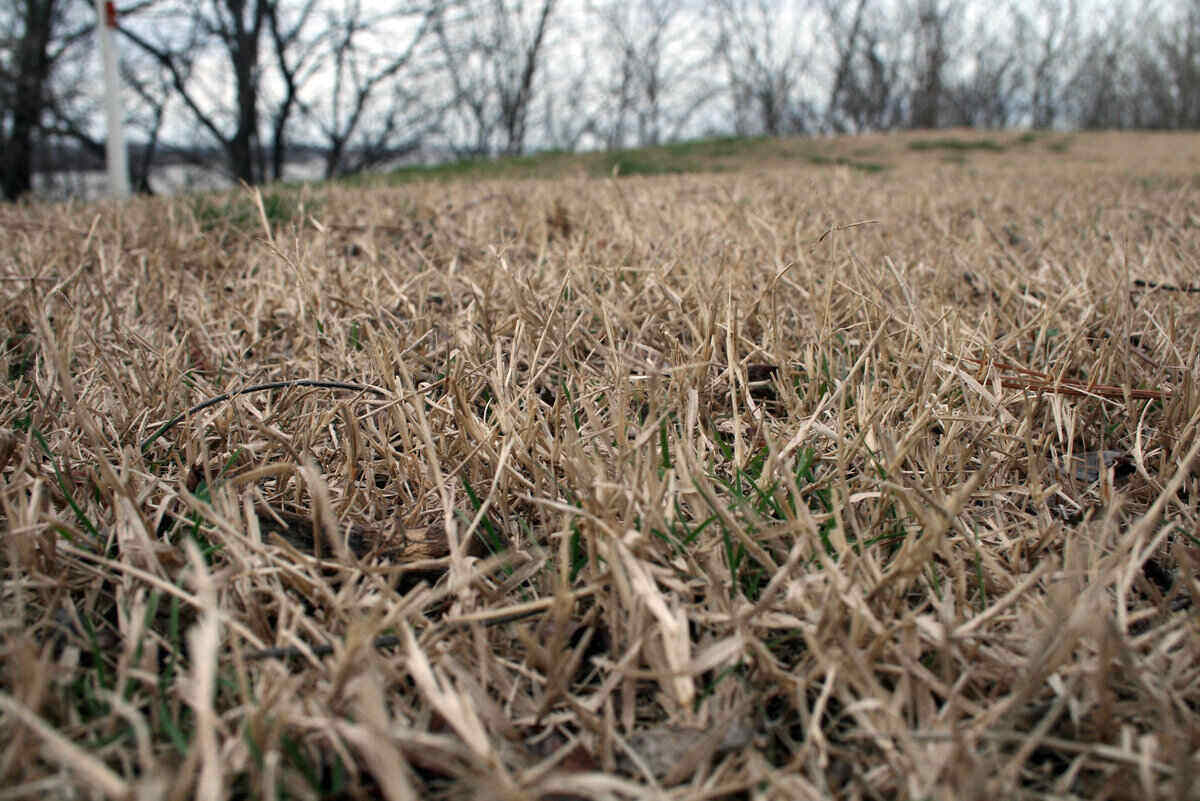
So, you think you’ve got dead grass? Reviving a tired and lackluster lawn can be a rewarding DIY project. Whether your grass has succumbed to drought, neglect, or other environmental factors, reviving grass is achievable. Discover how to bring grass back to life with essential steps and strategies to rejuvenate your lawn, turning it from a withered patch of earth into a vibrant carpet of green. Get your lawn back.
How to determine if your lawn is dead
First things first: The first step in diagnosing dead grass is to determine whether it is dead. Both dead grass and dormant grass turn brown, but how can you tell the difference?
One simple way is to do the tug test. Pull on a few brown grass leaves. Does the root come out? Or are you met with resistance? If your grass resists, it is alive. However, If it pulls out easily at the root, you are dealing with dead patches.
Grass type matters
Another way to determine lawn death vs. dormancy is to look at your grass type and local weather. Do you have cool-season or warm-season turfgrass? What time of year is it?
Cool-season grass often goes into a dormant (brown) state during the summer. On the other hand, warm-season grass goes dormant during the winter. So, if you have a brown stand of cool-season grass during the summer or a brown, warm-season lawn during the winter, that is completely normal.
Lawn dormancy causes
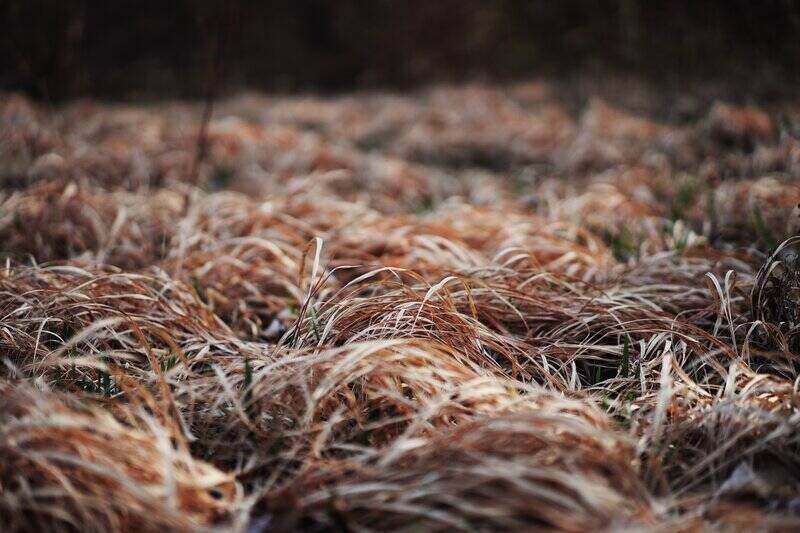
Brown lawns are typically a result of drought. Contact your local agricultural extension office, or look on their website, for specific advice on what to do for your grass during extended dry conditions. Experts usually recommend watering to 1 to 2 inches deep, the equivalent of two to three 15-minute watering sessions per week.
Pro tip: Watering deeply and infrequently keeps the crown of your grass alive, which allows it to green up when the weather becomes favorable again. Timing is important, too. Water before 10 a.m. to reduce evaporation and discourage disease.
Other causes of browning and dormancy include:
- Disease
- Fungus
- Overwatering
- Dog urine burn
- Fertilizer burn (over-fertilizing)
- Winter damage
- Insect damage
- Shade
- Chemicals
Ask yourself if any of these situations apply to your lawn. If you are unsure, don’t hesitate to contact a local lawn care service for an accurate diagnosis.
How to revive dead grass
Even if you are unsure what is wrong with your lawn, you can improve most lawn problems with good maintenance practices.
Test your soil
Send in a soil sample. Make sure your soil test includes your soil pH and the levels of nitrogen, phosphorus, and potassium. You can pick up a soil testing kit at your local home improvement store, order one online, or take a soil sample to your local cooperative’s extension office.
How does a soil test help revive dead grass?
A soil test can help you determine if fertilizer burn caused your brown spots. Knowing your soil pH and nutrient levels also can help you customize fertilization treatments and adjust your soil pH levels for your grass type.
Dethatch
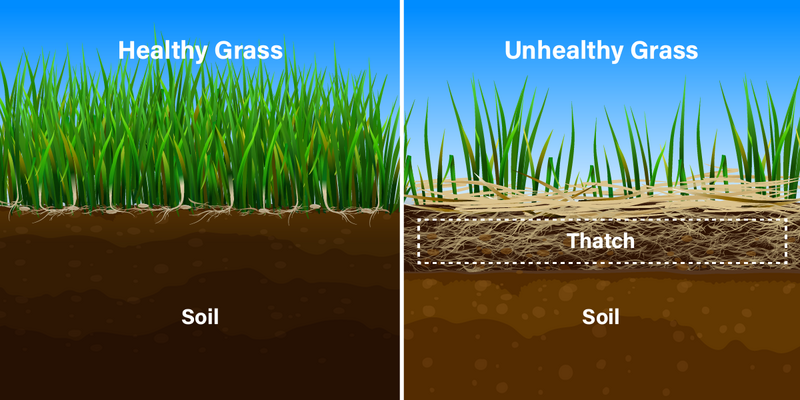
Thatch is a layer of living and dead plant material that creates a layer of build-up between your growing grass blades and the soil. A little thatch is good, but too much can hinder water, fertilizer, and seed from reaching the soil. Too much thatch also contributes to disease and insect pressures.
If your thatch layer is one-half- to three-quarter-inch thick, it is time to dethatch your lawn.
How does dethatching help revive dead grass?
Dethatching removes excess thatch, increasing your grass’s access to vital nutrients, water, and sunlight. It also reduces diseases and insects while enhancing seed-to-soil contact for lush new growth when overseeding,
Aerate
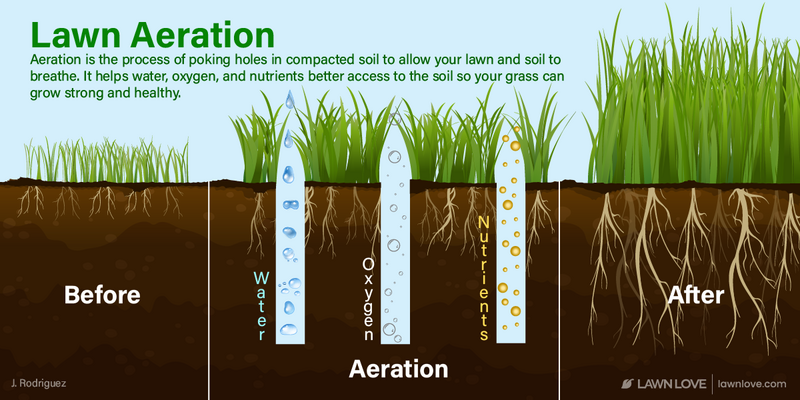
Aeration removes plugs of soil from your lawn, which improves air and water circulation. It is helpful if your soil is dense and compacted. You can rent an aeration machine or use a manual aerator if you only have small areas with dense soil.
Pro tip: If you can stick a knife into your soil with only the pressure from your thumb, you can skip aerating.
How does aeration help revive dead grass?
Aerating increases air and water flow. It also improves drainage, making the soil conditions more favorable for healthy growth.
Overseed
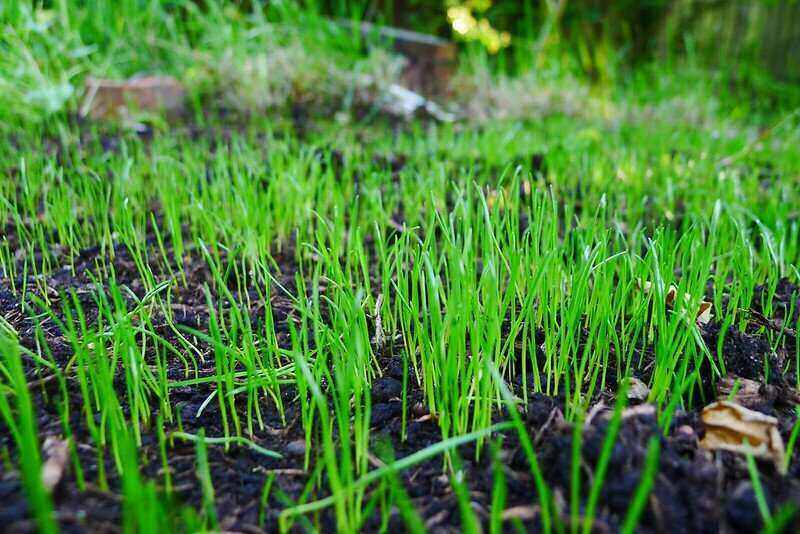
Overseeding involves sowing new grass seed over your existing lawn to improve density, fill in bare areas, and enhance your turf health. As long as 50% of your lawn is alive, you can lay down new grass seed to revive your lawn. Here are some basic steps to overseed your lawn:
- Prepare the area: Begin by mowing your lawn slightly shorter than usual and removing any debris or thatch. Aerate or dethatch before overseeding and apply a starter fertilizer.
- Select the right seed: Choose a grass seed variety that is well-suited to your climate and existing grass type. Read labels and select a high-quality seed blend.
- Seed distribution: Use a spreader to evenly distribute the grass seed over your lawn. Be sure to follow the recommended seeding rates on the packaging.
- Watering: Water your lawn thoroughly after overseeding to ensure good seed-to-soil contact. Keep the soil consistently moist until the new grass is established, which typically takes a few weeks. Start with short watering sessions, typically 10 to 15 minutes, two to three times per day to prevent surface drying.
- Maintenance: Avoid heavy foot traffic on the newly overseeded areas until the grass is well-established. Continue regular lawn care practices, including mowing, fertilizing, and watering, as needed.
How does overseeding help revive dead grass?
Overseeding is an effective way to rejuvenate a lawn with dead or struggling grass.
Water

During periods of active growth, Most grass cultivars need 1 inch of water per week. Aim for three 20-minute watering sessions weekly based on the weather. And remember, water between 6 a.m. to 10 a.m. to reduce evaporation and diseases.
Pro tip: If you are watering new grass seed from overseeding, water two to three times per day for 15 minutes to keep the soil moist until the seed starts to germinate. In weeks three and four, extend your watering duration. Aim for 20 to 30 minutes per session, two times per day, to ensure the water penetrates deeper into the soil.
How does watering help revive dead grass?
Watering early allows your grass to dry out before nightfall and avoid fungal issues. Also, watering infrequently but deeply encourages your grass roots to grow deep into the soil and fortifies it against drought conditions.
Mow
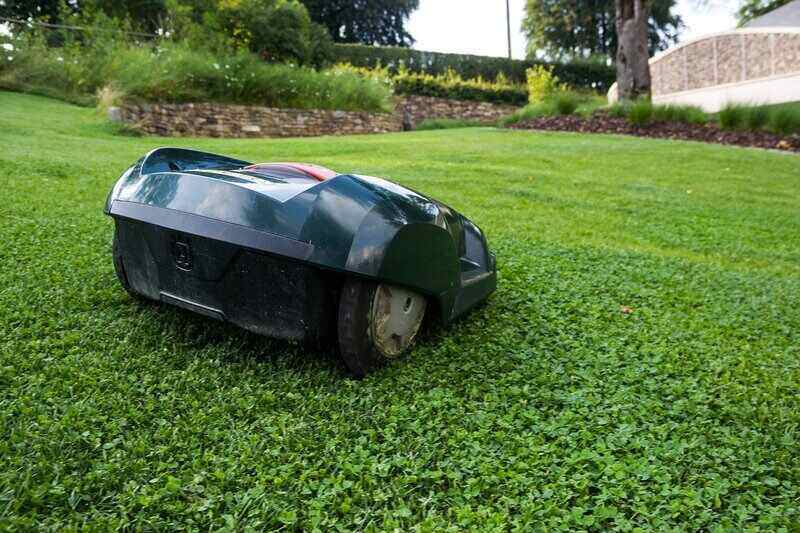
Don’t underestimate the importance of mowing to promote a healthy lawn. When your grass is actively growing, set your lawn mower to cut no more than one-third of the grass blades at a time. Here are some important tips to remember:
- Appropriate mowing height: Set your lawn mower at the right height for your grass type. Different grasses have different ideal mowing heights. Additionally, avoid setting your mower height too low and scalping your lawn which can kill your grass.
- Regular mowing: Stick to a regular mowing schedule, especially during the growing season. Frequent mowing encourages grass to grow denser and can help prevent weeds from taking over.
- Sharp blades: Ensure your mower blades are sharp. Dull blades can tear the grass rather than cut it cleanly, leading to stress and browning.
How does mowing help revive dead grass?
Longer grass helps shade the soil and prevent weed growth. Follow the recommended height for your grass cultivar.
| Grass Type | Optimal Mowing Height |
| Bahiagrass | 2-3 inches |
| Bermudagrass | 0.5-1.5 inches |
| Buffalograss | 1.5-3 inches |
| Centipedegrass | 1-2 inches |
| Fine Fescue | 1.5-2.5 inches |
| Kentucky Bluegrass | 1.5-2.5 inches |
| Perennial Ryegrass | 1.5-2.5 inches |
| St. Augustinegrass | 2.5-4 inches |
| Tall Fescue | 2-3.5 inches |
| Zoysiagrass | 0.5-2 inches |
Pro tip: When you mow, don’t forget to leave the grass clippings on your lawn. Mulch the clippings with your lawn mower to provide insulation and nutrients.
Fertilize
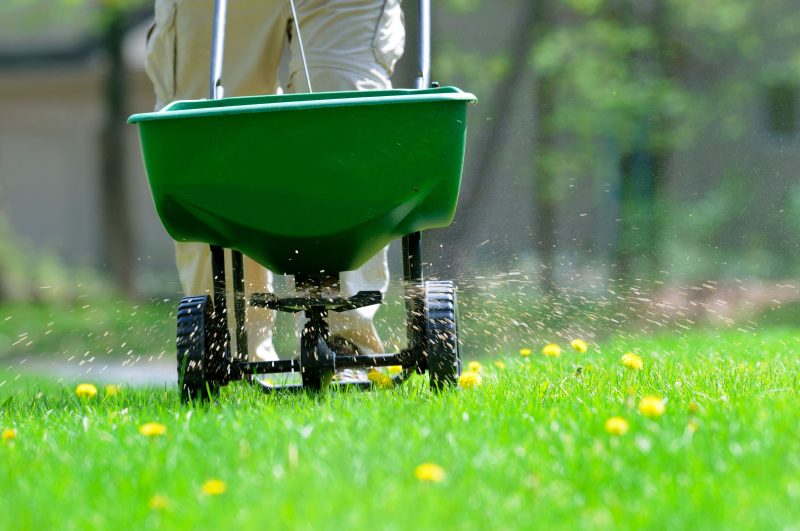
Fertilization and nutrient management are important components of revitalizing your lawn. Nutrients are the lifeblood of your grass, providing the essential elements for growth, color, and overall health. The primary nutrients that grass needs are nitrogen (N), phosphorus (P), and potassium (K), often referred to as N-P-K.
Pro tip: Nitrogen supports leafy growth and vibrant green color. Phosphorus aids in root development and flowering. Potassium contributes to disease resistance and overall stress tolerance.
Refer to your soil test results to determine your lawn’s nutrient needs. Apply a slow-release fertilizer in the early spring to summer. Avoid fertilizing during extreme heat or drought, and always follow the manufacturer’s instructions on the label.
Water your lawn lightly after fertilizing to help the nutrients penetrate the soil and reach the root zone.
How does fertilizing help revive dead grass?
Proper fertilization addresses your lawn’s missing nutrients to ensure it has everything it needs to thrive.
Control weeds
Weeds threaten the health and appearance of your lawn. Recognizing the types of pests invading your lawn is essential for effective control. Common lawn weeds include dandelions, crabgrass, clover, and broadleaf weeds like chickweed and plantain.
For small weed infestations, hand pulling is effective. Just be sure you remove the entire weed, including the roots. You also can apply selective herbicides designed to target specific weed types for larger problems.
How does controlling weeds help revive dead grass?
Weed control helps revive dead grass by reducing competition for resources and creating an environment for grass to grow.
Prevent pests
Like weeds, pests also threaten the health of your landscape and turfgrass. Common lawn pests include grubs, chinch bugs, armyworms, and mole crickets. Regularly inspect your lawn for signs of pest damage such as brown patches, holes, or activity like mounds or tunnels.
Implement proper lawn care practices that promote growth to control and prevent pests. This includes proper mowing, watering, and fertilization techniques. In severe cases, consider using chemical pesticides designed to target your specific pest issue.
How does preventing pests help revive dead grass?
Pest control prevents further damage to your lawn and creates conditions favorable for your grass to recover.
Troubleshooting common lawn issues
Even with the best care, your lawn can still face common issues like yellowing grass, brown patches, and uneven growth.
Yellowing grass
Yellowing grass can be caused by various factors, including nutrient deficiencies, improper watering, or pest infestations. Here’s how to address yellowing grass blades:
- Nutrient deficiencies: Perform a soil test to identify nutrient deficiencies. Adjust your fertilization regimen to provide the necessary nutrients, particularly nitrogen. Follow recommended rates and timing.
- pH Imbalance: Soil with an improper pH level can hinder nutrient uptake. If your soil test indicates a pH issue, amend the soil to bring it into the optimal range for your grass type.
- Watering practices: Ensure you are watering your lawn correctly. Deep, infrequent watering is generally better than shallow and frequent watering. Adjust your watering schedule to provide consistent moisture.
- Pest control: Check for signs of pests, such as grubs or chinch bugs, which can cause yellowing. If pests are detected, consider targeted pest control measures.
- Disease management: Lawn diseases also can lead to yellowing. Proper lawn care practices, including aeration and good air circulation, can help prevent fungal diseases.
Brown patches
Brown patches result from various issues like disease, overwatering, and soil compaction. Address brown patches by:
- Disease control: If brown patches appear suddenly, they may be a sign of a lawn disease like brown patch or dollar spot. Apply fungicides as needed based on the severity of the problem and follow recommended guidelines.
- Proper watering: Overwatering can lead to brown patches due to soil saturation and root suffocation. Adjust your watering schedule and use a sprinkler to prevent waterlogged conditions.
- Aeration: Compacted soil can contribute to brown patches. Use a lawn aerator to relieve soil compaction and improve water infiltration.
- Reseeding: In severe cases, you may need to remove the affected areas and reseed or resod. Ensure proper soil preparation before reseeding or sodding.
Uneven growth
Uneven growth makes your lawn look patchy and less attractive. Here’s how to address uneven grass:
- Mowing practices: Ensure your mower blades are sharp and set at the correct height for your grass type. Mow regularly and avoid removing more than one-third of the grass blade’s height at once.
- Lawn aeration: Perform core aeration to improve soil structure and address compacted areas. This will promote even growth.
- Grass compatibility: Verify that the grass types in your lawn are compatible in terms of growth habits, sun/shade tolerance, and maintenance requirements.
- Overseeding: Overseed to fill in thin areas and create a more uniform lawn.
FAQ about how to revive dead grass
When is the best time to revive dead grass?
The best time to revive dead grass is in the early fall or late spring when temperatures are moderate, and there’s adequate moisture for grass seed or sod to establish.
How long does it take to see results when reviving dead grass?
It varies. The time it takes to see significant results varies depending on factors like grass type, weather, and the extent of the damage. In general, you may notice improvements within a few weeks, but full recovery can take several months.
Can I speed up the revival process with fertilizer?
Fertilizers can be beneficial, but it is essential to follow the recommended rates and timing. A balanced fertilizer can provide essential nutrients for grass growth, but avoid overfertilization, which can harm your grass.
Make your lawn green again
Going from a dead lawn to a new lawn takes a little bit of work. However, by determining the cause and employing the necessary lawn care practices, your lawn patches may be a thing of the past before you know it.
If you’re unsure about the cause of your grass damage or have an extensive problem, let Lawn Love connect you with a lawn care professional who can diagnose, treat, and maintain your lawn throughout the growing season.
Main Photo Credit: Lindsey Turner | Flickr | CC BY 2.0